
How to Grow and Care for a Weeping Begonia Plant: A Complete Guide
Weeping begonia plants are a stunning addition to any garden or indoor space, but they require specific care and attention to thrive. In this complete guide, we’ll cover everything you need to know about growing and caring for a weeping begonia plant. From the right soil and watering techniques to proper sunlight and temperature requirements, we provide all the information you need to help your weeping begonia flourish. Whether you’re a seasoned gardener or a beginner, this guide will equip you with the knowledge and skills to successfully grow and care for this beautiful plant.
Table of Contents
ToggleUnderstanding Weeping Begonia Plants
Description of weeping begonia plant characteristics: foliage, flowers, and growth habits.
Weeping begonia plants are known for their striking foliage and delicate flowers, making them a popular choice for both indoor and outdoor gardens. The foliage of a weeping begonia plant is typically large and asymmetrical, with a variety of colors and patterns, including shades of green, silver, and red. The flowers of the weeping begonia plant can come in a range of colors, including pink, red, white, and yellow, and they often have a cascading or trailing growth habit, hence the name “weeping” begonia. These plants are known for their ability to add a touch of elegance and beauty to any space, and they are relatively easy to care for once you understand their specific needs. With the right care and attention, weeping begonia plants can thrive and bring joy to any garden or living space.
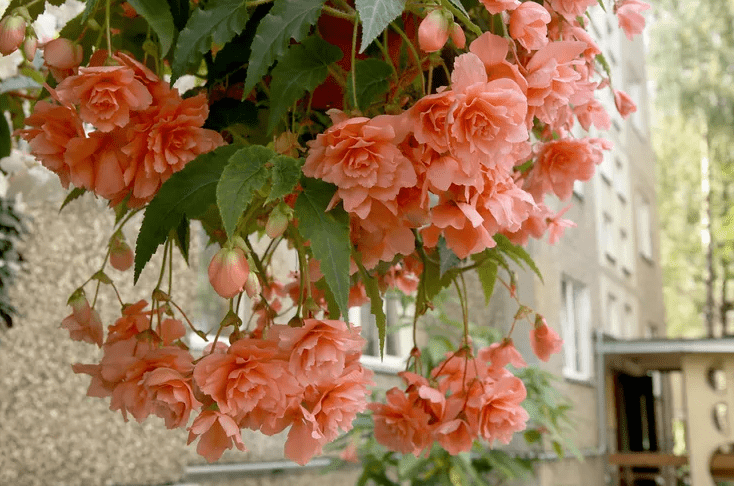
Varieties and cultivars of weeping begonias, including popular types and their unique features.
There are several varieties and cultivars of weeping begonias, each with their own unique features. Some popular types include the Dragon Wing Begonia, which has glossy green leaves and bright red or pink flowers that cascade down the plant. The Nonstop Begonia is another popular variety, known for its large, vibrant flowers and compact growth habit. The Angel Wing Begonia has unique, angel-shaped leaves and produces clusters of delicate pink or white flowers. The Tuberous Begonia is a favorite for its stunning, large blooms in a wide range of colors. Each variety of weeping begonia has its own distinct characteristics and growing requirements, so it’s important to research and choose the right type for your specific garden or indoor space. With the right care and attention, weeping begonias can bring beauty and elegance to any garden.
Benefits of growing weeping begonias in gardens or as indoor plants.
Growing weeping begonias in gardens or as indoor plants can bring a variety of benefits. These beautiful and elegant plants are known for their cascading flowers and foliage, adding a touch of charm and sophistication to any space. Weeping begonias are versatile and can thrive in both outdoor gardens and indoor environments, making them a great choice for plant enthusiasts. They are also relatively low-maintenance, making them an ideal option for those who want to add some greenery to their surroundings without having to put in a lot of effort. Weeping begonias are also known for their ability to attract pollinators, such as butterflies and bees, making them a valuable addition to any garden. Additionally, their unique and vibrant flowers can add a pop of color to any space, brightening up the area and creating a visually appealing focal point. Whether you choose to grow weeping begonias in your garden or as indoor plants, they are sure to bring joy and beauty to your surroundings.
Planting Weeping Begonia Plants
Suitable growing conditions: light requirements (e.g., partial shade, indirect sunlight).
Weeping begonias are beautiful and elegant plants that can bring charm and sophistication to any space. They are versatile and can thrive in both outdoor gardens and indoor environments, making them a great choice for plant enthusiasts. They are also relatively low-maintenance, making them an ideal option for those who want to add some greenery to their surroundings without having to put in a lot of effort. Weeping begonias are also known for their ability to attract pollinators, such as butterflies and bees, making them a valuable addition to any garden. Additionally, their unique and vibrant flowers can add a pop of color to any space, brightening up the area and creating a visually appealing focal point. When planting weeping begonias, it’s important to consider their light requirements, such as partial shade or indirect sunlight, to ensure they thrive and flourish. Whether you choose to grow weeping begonias in your garden or as indoor plants, they are sure to bring joy and beauty to your surroundings.
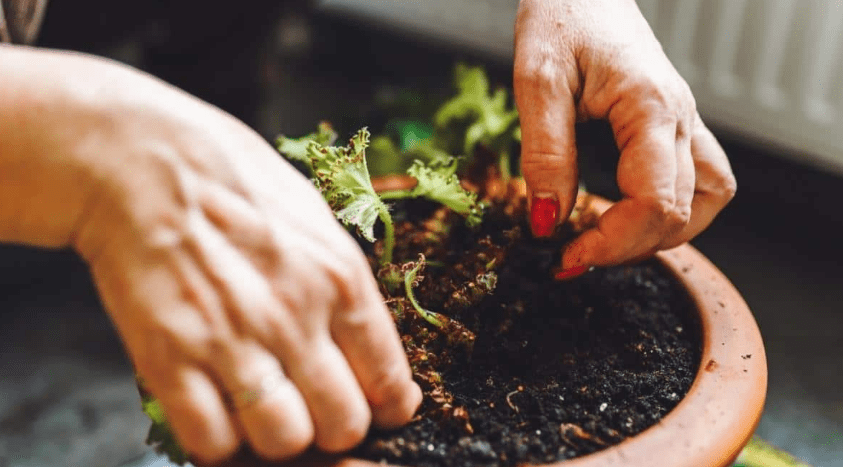
Soil preferences: well-draining, nutrient-rich soil with good moisture retention.
Weeping begonias are elegant and beautiful plants that can add charm and sophistication to any space. They are versatile and can thrive in both outdoor gardens and indoor environments, making them a great choice for plant enthusiasts. Weeping begonias are also relatively low-maintenance, making them an ideal option for those who want to add some greenery to their surroundings without having to put in a lot of effort. Additionally, they are known for their ability to attract pollinators, such as butterflies and bees, making them a valuable addition to any garden.
When planting weeping begonias, it’s important to consider their soil preferences. They thrive in well-draining, nutrient-rich soil with good moisture retention. It’s also important to consider their light requirements, such as partial shade or indirect sunlight, to ensure they thrive and flourish. Their unique and vibrant flowers can add a pop of color to any space, brightening up the area and creating a visually appealing focal point. Whether you choose to grow weeping begonias in your garden or as indoor plants, they are sure to bring joy and beauty to your surroundings.
Watering and Moisture Management
Watering needs: frequency and methods to keep soil consistently moist but not waterlogged.
When it comes to watering weeping begonias, it’s important to keep the soil consistently moist but not waterlogged. You can achieve this by watering the plants regularly, making sure that the soil is not drying out completely between waterings. However, it’s crucial to avoid overwatering, as this can lead to root rot and other issues. One method to ensure proper moisture retention is to water the plants slowly and deeply, allowing the water to penetrate the soil and reach the roots. Additionally, using a layer of mulch around the plants can help to retain moisture in the soil. It’s important to monitor the soil moisture levels and adjust the watering frequency as needed, especially during hot and dry periods. By carefully managing the watering needs of weeping begonias, you can help them thrive and flourish in your garden or indoor space.
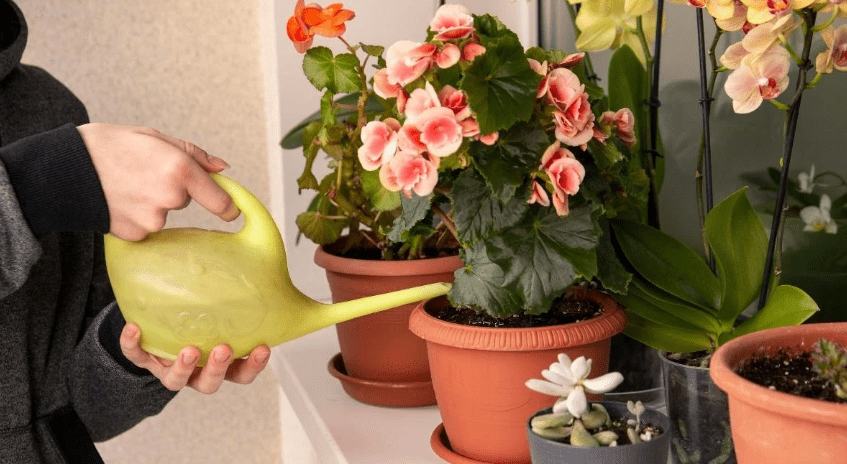
Importance of humidity levels, especially for indoor cultivation.
Humidity levels are crucial for indoor cultivation, especially for plants like weeping begonias. These plants thrive in high humidity environments, so it’s important to ensure that the air around them is sufficiently moist. You can achieve this by misting the plants regularly or placing a humidifier near them to maintain the ideal humidity levels. Proper humidity levels can help prevent the leaves from drying out and reduce the risk of fungal diseases. Additionally, you can place a tray filled with water and pebbles near the plants to increase the moisture in the air. It’s important to monitor the humidity levels regularly and make adjustments as needed to create the best growing conditions for your indoor plants. By paying attention to humidity levels, you can create a healthy and vibrant environment for your indoor cultivation.
Feeding and Fertilizing
Nutritional requirements of weeping begonia plants: balanced fertilizer formulation and application guidelines.
Weeping begonia plants have specific nutritional requirements that need to be met in order for them to thrive. It’s important to use a balanced fertilizer formulation to ensure that the plants receive all the necessary nutrients. Look for a fertilizer that is specifically formulated for flowering plants, as this will provide the right balance of nutrients for weeping begonias. When applying the fertilizer, be sure to follow the guidelines on the packaging to avoid overfeeding or underfeeding the plants. It’s important to fertilize the plants regularly during the growing season, but be cautious not to overdo it as this can be harmful to the plants. In addition to fertilizer, it’s also important to provide the plants with sufficient water and sunlight to support healthy growth. By meeting the nutritional needs of your weeping begonia plants, you can help them to flourish and produce beautiful blooms.
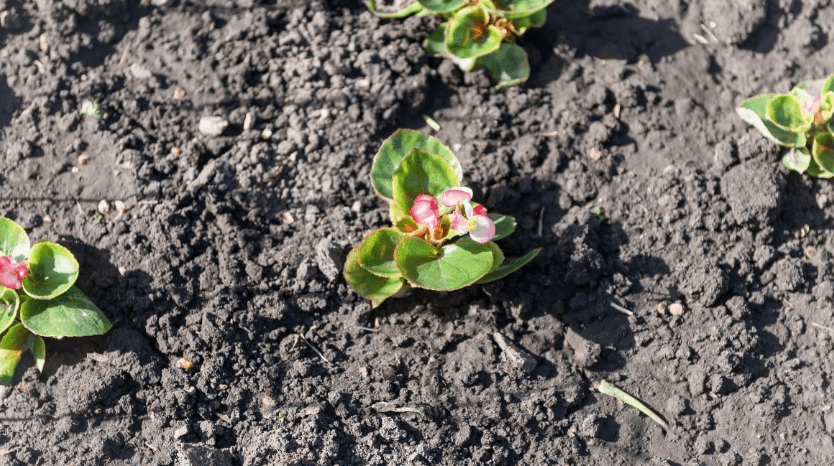
Fertilizing schedule throughout the growing season to promote healthy foliage and abundant blooms.
Weeping begonia plants have specific nutritional requirements that need to be met in order for them to thrive. It’s important to use a balanced fertilizer formulation to ensure that the plants receive all the necessary nutrients. Look for a fertilizer that is specifically formulated for flowering plants, as this will provide the right balance of nutrients for weeping begonias. When applying the fertilizer, be sure to follow the guidelines on the packaging to avoid overfeeding or underfeeding the plants.
It’s important to fertilize the plants regularly throughout the growing season to promote healthy foliage and abundant blooms. However, be cautious not to overdo it as this can be harmful to the plants. In addition to fertilizer, it’s also important to provide the plants with sufficient water and sunlight to support healthy growth. By meeting the nutritional needs of your weeping begonia plants, you can help them to flourish and produce beautiful blooms. Remember to maintain a consistent fertilizing schedule throughout the growing season to promote healthy foliage and abundant blooms.
Pruning and Maintenance
Pruning techniques for shaping and maintaining the desired form of weeping begonia plants.
Pruning is an essential part of shaping and maintaining the desired form of weeping begonia plants. It’s important to prune the plants regularly to remove dead or damaged foliage, promote new growth, and maintain the desired shape. When pruning, be sure to use clean, sharp pruning shears to make clean cuts and minimize the risk of disease. Start by removing any dead or discolored leaves, as well as any branches that are crossing or rubbing against each other. This will help to improve air circulation and prevent the spread of disease. Additionally, you can prune the plants to encourage a fuller, more compact growth habit. To do this, simply trim back the new growth to the desired length, making sure to cut just above a leaf node. By using these pruning techniques, you can help to keep your weeping begonia plants healthy and looking their best. Remember to prune the plants regularly throughout the growing season to maintain their shape and promote healthy growth.
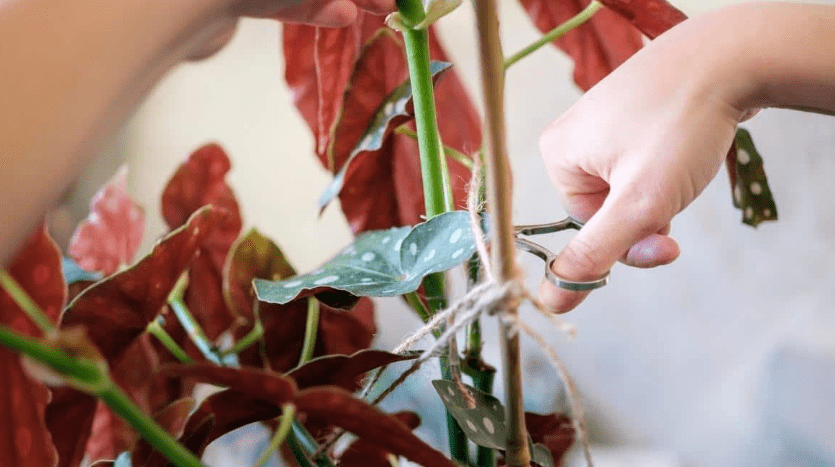
Deadheading spent flowers to encourage continuous blooming.
Deadheading spent flowers is a great way to encourage continuous blooming in your plants. This process involves removing the old, faded flowers from your plants to promote the growth of new flowers. By doing this, you can help your plants to produce more blooms and prolong the flowering period. When deadheading, it’s important to use clean, sharp pruning shears to make clean cuts and minimize the risk of disease. Start by removing any dead or discolored leaves, as well as any branches that are crossing or rubbing against each other. This will help to improve air circulation and prevent the spread of disease. Additionally, you can prune the plants to encourage a fuller, more compact growth habit. To do this, simply trim back the new growth to the desired length, making sure to cut just above a leaf node. By using these pruning techniques, you can help to keep your plants healthy and looking their best. Remember to deadhead your plants regularly throughout the growing season to maintain their shape and promote healthy growth. With proper deadheading and pruning, you can enjoy a garden full of beautiful, continuous blooms.
Common Pests and Diseases
Identification of common pests affecting weeping begonias (e.g., aphids, spider mites) and their symptoms.
Weeping begonias can be vulnerable to common pests such as aphids and spider mites. Aphids are small, soft-bodied insects that can be green, yellow, brown, black, or red, and they can be found on the undersides of leaves. Spider mites are tiny pests that can cause damage by sucking the sap from the leaves, resulting in yellow or bronze-colored spots. To identify aphids, look for distorted or discolored leaves, stunted growth, or a sticky substance on the leaves called honeydew. Spider mites can cause fine webbing on the leaves and yellow stippling or discoloration. To address these pests, you can use organic insecticidal soaps or neem oil to control aphids, and you can use predatory mites or insecticidal soap to control spider mites. It’s important to regularly inspect your weeping begonias for signs of pests and take action promptly to prevent damage to your plants.
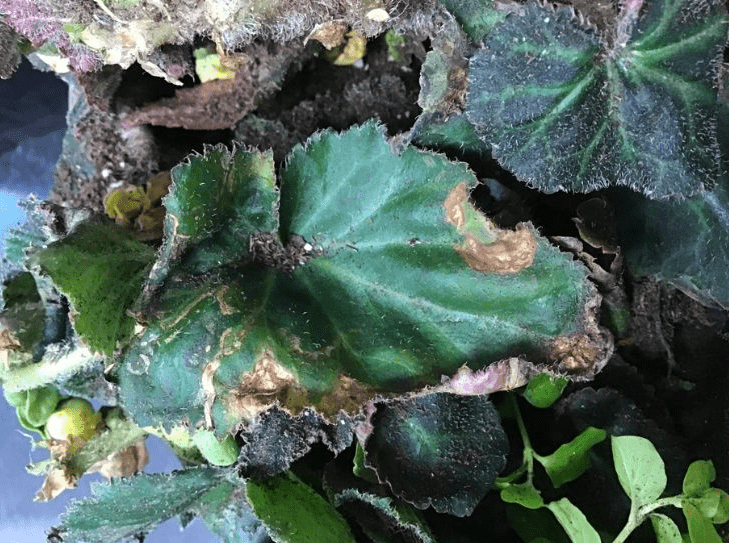
Preventive measures and organic pest control methods to protect plants.
Weeping begonias are beautiful and delicate plants that can be vulnerable to common pests such as aphids and spider mites. Aphids are small, soft-bodied insects that can come in different colors and can be found on the undersides of leaves. They can cause distorted or discolored leaves, stunted growth, or a sticky substance called honeydew on the leaves. Spider mites, on the other hand, are tiny pests that can cause damage by sucking the sap from the leaves, resulting in yellow or bronze-colored spots and fine webbing on the leaves.
To protect your weeping begonias from these pests, it’s important to regularly inspect your plants for any signs of infestation and take action promptly. You can use organic insecticidal soaps or neem oil to control aphids, and for spider mites, you can use predatory mites or insecticidal soap. These organic pest control methods are effective in protecting your plants without harming the environment.
In addition to using organic pest control methods, you can also take preventive measures to protect your plants. This includes keeping your plants healthy and well-maintained, maintaining good air circulation, and avoiding over-fertilization, as this can attract pests. By implementing these preventive measures and organic pest control methods, you can protect your weeping begonias and ensure they thrive and flourish.
Propagation Techniques
Propagation Techniques are important for the growth and expansion of your plant collection. There are several methods of plant propagation, including division, cuttings, layering, and seed sowing. Each method has its own benefits and is suitable for different types of plants. Division involves separating a plant into smaller sections, each with its own roots, to create new plants. Cuttings involve taking a piece of a plant, such as a stem or leaf, and planting it to produce a new plant. Layering is a method where a portion of the plant is covered with soil to promote root growth, and then separated to create a new plant. Seed sowing, as the name suggests, involves planting seeds to grow new plants. It’s important to research the specific propagation methods that are best for the type of plant you want to propagate. Each method requires different care and attention to ensure successful propagation. By learning and applying these propagation techniques, you can expand your plant collection and enjoy the beauty of a variety of plants in your garden.
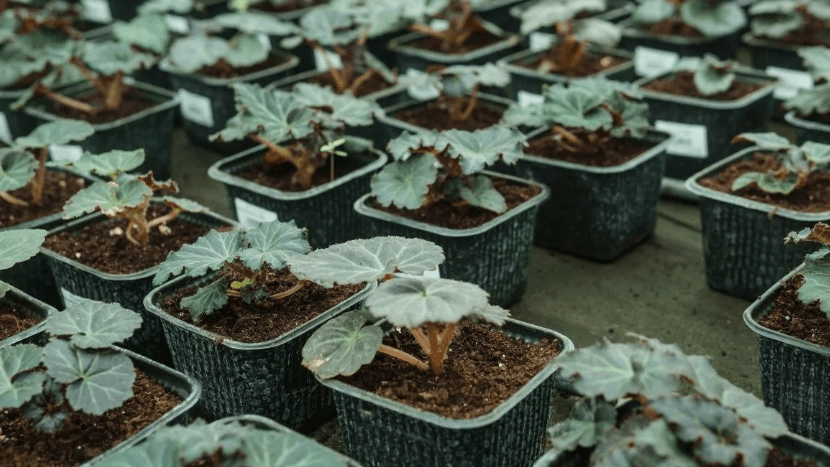
Designing with Weeping Begonia Plants
Creative ways to incorporate weeping begonias into garden landscapes, containers, or hanging baskets.
Weeping begonias can add a beautiful and unique touch to any garden landscape, container, or hanging basket. There are several creative ways to incorporate these beautiful plants into your outdoor space. When it comes to garden landscapes, weeping begonias can be used as a border plant or planted in clusters to create a stunning display of color and texture. They also work well in containers, adding a pop of color and elegance to patios, balconies, or any outdoor living space. Hanging baskets are another great option for showcasing weeping begonias, as their cascading foliage and delicate flowers can create a stunning visual display when suspended from a porch or pergola. Additionally, weeping begonias can be propagated through various methods such as division, cuttings, layering, and seed sowing. By learning and applying these propagation techniques, you can expand your plant collection and enjoy the beauty of a variety of plants in your garden. With a little creativity and a touch of green thumb, you can create a garden landscape or container display that showcases the beauty of weeping begonias.
Seasonal Care Tips
Seasonal care guidelines: adjusting watering, fertilizing, and maintenance practices according to seasonal changes.
When it comes to caring for weeping begonias, it’s important to adjust your watering, fertilizing, and maintenance practices according to seasonal changes. In the spring and summer, weeping begonias will require more frequent watering, as the warmer temperatures can cause the soil to dry out more quickly. However, be sure to allow the soil to dry out slightly between waterings to prevent overwatering. It’s also important to fertilize your weeping begonias during the growing season to promote healthy growth and abundant blooms. Choose a balanced, water-soluble fertilizer and apply it according to the manufacturer’s instructions. As the weather cools in the fall, you can reduce your watering and stop fertilizing to allow the plants to enter a period of dormancy. Finally, in the winter, it’s important to protect your weeping begonias from frost and cold temperatures. If you live in a colder climate, consider bringing your plants indoors or providing them with a protective covering to ensure their survival during the winter months. By adjusting your care practices according to the seasons, you can help your weeping begonias thrive and continue to add beauty to your outdoor space.
Winter care tips for protecting outdoor weeping begonia plants from frost or cold temperatures.
When caring for outdoor weeping begonia plants in the winter, it’s important to take steps to protect them from frost or cold temperatures. One important tip is to allow the soil to dry out slightly between waterings to prevent overwatering, as too much moisture can harm the plants in cold weather. It’s also crucial to fertilize the weeping begonias during the growing season to promote healthy growth and abundant blooms. Choose a balanced, water-soluble fertilizer and apply it according to the manufacturer’s instructions. As the weather cools in the fall, you can reduce your watering and stop fertilizing to allow the plants to enter a period of dormancy. Finally, in the winter, it’s important to protect your weeping begonias from frost and cold temperatures. If you live in a colder climate, consider bringing your plants indoors or providing them with a protective covering to ensure their survival during the winter months. By adjusting your care practices according to the seasons, you can help your weeping begonias thrive and continue to add beauty to your outdoor space.
In conclusion, growing and caring for a weeping begonia plant requires attention to detail and a consistent care routine. By providing the right soil, watering, sunlight, and temperature conditions, you can ensure that your weeping begonia thrives and blooms beautifully. Remember to regularly check for pests and diseases, and prune as needed to maintain the health and appearance of your plant. With proper care, your weeping begonia plant will bring beauty and joy to your home or garden for years to come.
Frequently asked questions And Answer
A weeping begonia plant is a type of begonia that has cascading, trailing stems and delicate, colorful flowers. It is a popular choice for hanging baskets or as a ground cover in shaded areas.
Weeping begonias thrive in well-draining, slightly acidic soil and prefer partial to full shade. Plant them in a location with indirect sunlight and water them regularly to keep the soil moist but not waterlogged.
In addition to regular watering, weeping begonias benefit from occasional fertilization during the growing season. Pinch back the stems to encourage bushier growth and remove any dead or faded flowers to promote continuous blooming.
Yes, weeping begonias can be propagated from stem cuttings. Simply take a cutting from a healthy stem, remove the lower leaves, and place the cutting in moist soil or water until roots develop.
Weeping begonias are susceptible to pests such as aphids and mealybugs, as well as diseases like powdery mildew. Regularly inspect the plant for any signs of infestation or disease and take appropriate measures to control them.
Yes, weeping begonias can be grown indoors as long as they receive sufficient indirect sunlight and are kept in a well-ventilated area. They are a great option for adding a touch of greenery and color to indoor spaces.
Weeping begonias are sensitive to cold temperatures and should be brought indoors or protected from frost during the winter. Reduce watering and fertilization during the dormant period and resume regular care in the spring.
Yes, there are several different varieties of weeping begonias, each with its own unique flower colors and growth habits. Some popular varieties include ‘Dragon Wing’, ‘Bonfire’, and ‘Nonstop’.
